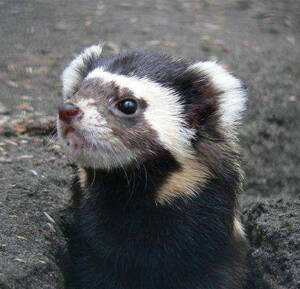
Vormela peregusna
Vormela peregusna,Marbled Polecat,Flowery dog, stinky dog, horse Aihu
The tiger weasel (scientific name: Vormela peregusna) is also known as the M···

Mustela tonkinensis
Mustela tonkinensis,Tonkin Weasel
Vietnamese weasel (scientific name: Mustela tonkinensis) is called Tonkin We···

Mustela strigidorsa
Mustela strigidorsa,Stripe-backed Weasel、Back-striped Weasel,Weasel
Stripe-backed Weasel (scientific name: Mustela strigidorsa) is also known as···

Mustela subpalmata
Mustela subpalmata,Egyptian Weasel
Egyptian Weasel (scientific name: Mustela subpalmata), foreign name Egyptian···

Mustela sibirica
Mustela sibirica,Siberian Weasel,Weasel, yellow wolf, yellow skin, Huang Daxian, little weasel
The yellow weasel (scientific name: Mustela sibirica) is also known as the S···

Mustela russelliana
Mustela russelliana,Sichuan Weasel、Lackedteeth Pygmy Weasel,Sichuan subspecies of Weasel
Sichuan Weasel (scientific name: Mustela russelliana) is also known as Sichu···
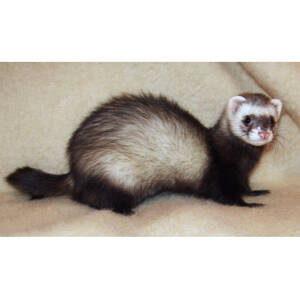
Mustela putorius
Mustela putorius,Western Polecat、European Polecat,European weasel, western weasel
The forest weasel (scientific name: Mustela putorius) is also known as Weste···

Mustela nudipes
Mustela nudipes,Malay Weasel,Barefooted weasel, Indochina weasel
Malay Weasel (scientific name: Mustela nudipes) is also known as Malay Wease···

Mustela nivalis
Mustela nivalis,Least Weasel,Silver mouse, white mouse, Japanese weasel
Least Weasel (scientific name: Mustela nivalis) is also known as Least Wease···

Mustela nigripes
Mustela nigripes,Black-footed ferret,Black-footed ferret, black-footed ferret, dark-eyed ferret
Black-footed ferret (scientific name: Mustela nigripes) is a small carnivoro···

Mustela lutreolina
Mustela lutreolina,ndonesian Mountain Weasel,Javan weasel, Indonesian mountain weasel
Indonesian Mountain Weasel (scientific name: Mustela lutreolina) Foreign nam···

Mustela lutreola
Mustela lutreola,European Mink,European water mink
The European Mink (scientific name: Mustela lutreola) is a medium-sized must···

Mustela kathiah
Mustela kathiah,Yellow-bellied Weasel,Mushroom wolf, pine wolf, little yellow wolf
Yellow-bellied Weasel (scientific name: Mustela kathiah) is also known as Ye···

Mustela itatsi
Mustela itatsi,Japanese Weasel
Japanese weasel (scientific name: Mustela itatsi) is a species of weasel in ···

Mustela frenata
Mustela frenata,Long-tailed Weasel、Bridled Weasel、Big Stoat,White-browed weasel, greater weasel
Long-tailed Weasel (scientific name: Mustela frenata) is also known as Long-···

Mustela felipei
Mustela felipei,Colombian Weasel
Colombian Weasel (scientific name: Mustela felipei) is the second smallest c···

Mustela eversmanii
Mustela eversmanii,Aihu, ground dog, two-headed black, black-footed ferret
The scientific name of the mustela is Mustela eversmanii, and there are 5 su···
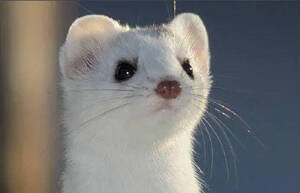
Mustela erminea
Mustela erminea,Stoat、Ermine、Short-tailed Weasel,Snow weasel, short-tailed weasel, short-tailed weasel
Stoat (scientific name: Mustela erminea) Stoat, Ermine, Short-tailed Weasel,···
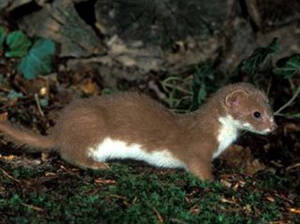
Mustela africana
Mustela africana,Amazon Weasel
The scientific name of the Amazon Weasel is Mustela africana, and its foreig···

Mustela altaica
Mustela altaica,Mountain Weasel,Rat
Mustela altaica (scientific name: Mustela altaica) is a small to medium-size···
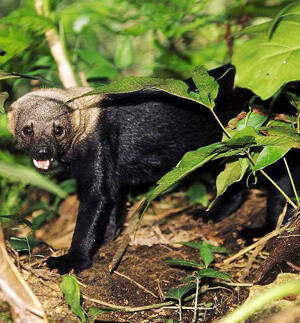
Eira Barbara
Eira Barbara
The scientific name of the fox stoat is Eira Barbara, a mustelid species nat···
